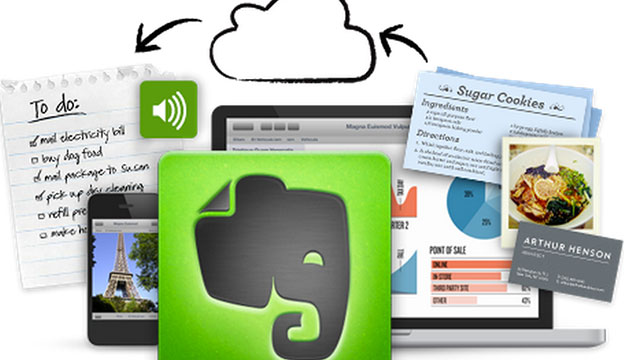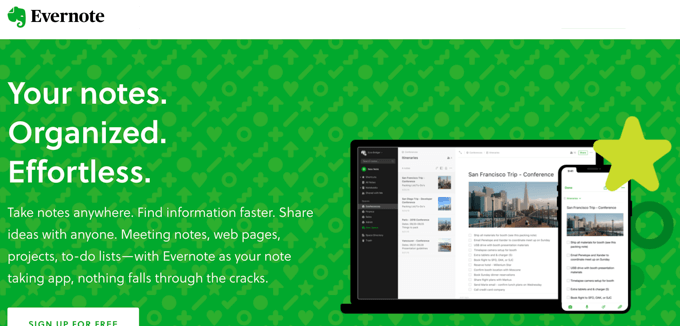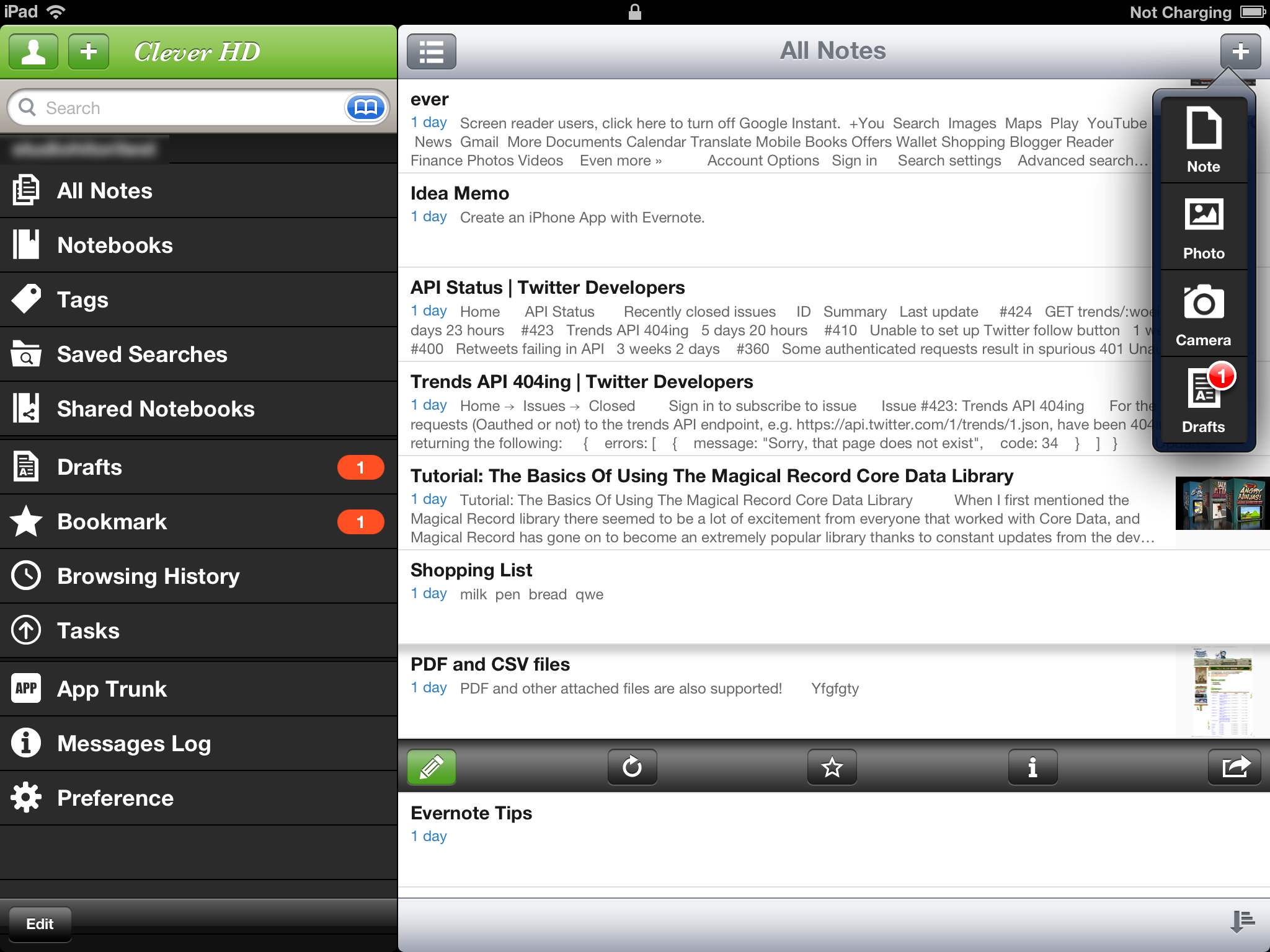

- #Evernote app for computer how to#
- #Evernote app for computer pdf#
- #Evernote app for computer install#
- #Evernote app for computer driver#
- #Evernote app for computer manual#
#Evernote app for computer pdf#
Here you can set a specific folder to which the PDF files will be saved. The Foxit printer (shown above) has this on the General tab, in a field called Target Folder.
#Evernote app for computer driver#
Look around (each PDF printer driver has different menus, so I can’t specifically guide you here), for an option relating to saving the output file. Click the Printing Defaults button and a new menu page will appear. Click Apply, and you will likely see a few new tabs appear. 
Foxit Reader PDF Printer Driver if you installed Foxit
In the Driver drop-down list, change the driver to the PDF Printer App you installed – e.g. Right-click on the printer and select Printer Properties. Find your new printer – Hopefully you called it Evernote. From Control Panel > Hardware & Sound, click on Devices and Printers. 
Skip printing a test page and finish the wizard.Click Next and do not share the printer.Click Next and give your printer a name – I suggest Evernote as it will be obvious what this is for.You can select any of the Microsoft ones for example. Select any printer driver from the list – it doesn’t matter which one as you’ll be changing it in a later step.

Give your local port a name – EvernotePrinter for example – and click Next.Leave the Type of port set to Local port and click Next.
#Evernote app for computer manual#
Select Add a local printer or network printer with manual settings. Click The printer that I want isn’t listed. Go to Control Panel and browse to Hardware and Sound. Make a note of this folder’s path as you’ll need it later #Evernote app for computer how to#
See this page for instructions on how to do that.
Create a folder somewhere on your computer and set this as the import folder for Evernote. #Evernote app for computer install#
Download and install a free PDF Printer application (one of those listed above or any other which supports a print-to-folder option). Foxit PDF Reader (which includes a PDF Printer). The ones below all have this feature too. I created a new printer (see step-by-step below), and elected to use my Kofax PDF Printer driver (included with Kofax PowerPDF), as it includes a save-to-folder option. This is a perfect feed to Evernote’s hotfolder functionality, allowing you to print from any application into your Evernote much faster than the normal drag-and-drop method to add files to a new note.Īs it happened, I already had several PDF printers installed on my Windows 10 laptop. Many of these include a save to folder function, allowing you to convert your print to PDF and automatically save the resulting file to folder of your choosing without any further interaction. There are a plethora of Print to PDF solutions available online including many decent free options (three of which I’ve listed below). You can set up multiple hot-folders with different indexing outcomes, so this presented a way to print to Evernote indirectly. I had come to rely on this features quite heavily.Īfter some quick Googles I discovered that Evernote for Windows has an auto-import feature where you can monitor a folder for any supported file type, and then import with various indexing actions. On macOS you can easily add a printer which creates a PDF using the built-in PDF writer, then sends it to any installed App. I was somewhat perplexed when I went to print something to Evernote, only to find that on Windows this feature seems to be missing. Incidentally I use another document management system called Therefore for official work documents, price lists, brochures, contracts and that sort of thing, but Evernote takes everything non-commercial in nature. Evernote is my go-to quasi document management system, and I rely upon its search function to pluck any note or web clip from the depths of its cloud storage without notice. I am a heavy Evernote user, storing everything from household bills, product purchase receipts, recipes, web-page snips and more on a daily basis. This series of unfortunate events left us short on devices for everyone needing to work/study from home, leading me to grab my employer-issued ThinkPad from my office locker where it has sat unused for two years, and sit through many subsequent hours of updates and reboots before I could get back to work. A week ago the Work From Home Gods decided to hit me with a left-right-uppercut combination by taking out my 3 month-old Macbook Pro after a drink-spill incident, then my old five-year-old Macbook Pro which I was rebuilding for my daughter to school from home, and finally my wife’s iPad Pro, all within the space of two days.








 0 kommentar(er)
0 kommentar(er)
